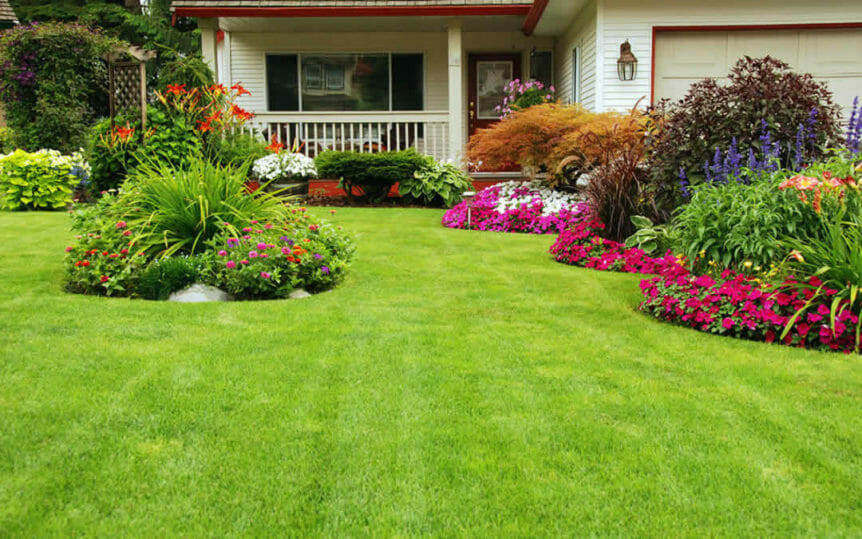
Seven Ways to Make Your Grass Greener Without Watering More
Pretty much everyone wishes he had a greener lawn. It might be a source of personal pride, or you hope to enjoy the thicker, lusher feel of the yard. Maybe you just like competing with the neighbors to see who has the best house on the block.
Whatever your motivation, you want a thicker, brighter lawn to come home to. But there’s just one problem, and it’s a big one.
The Water Problem
The easiest and most intuitive way to get greener grass is to give it more water. It’s been estimated that you need at least an inch of well-penetrated water for your lawn per week, but a little extra won’t hurt to get that nice, green color you’re after.
In the summer, especially in Houston, this could mean watering your lawn multiple times a day, preferably before the sun comes up and always making sure the water can soak through at least six inches so the grass can get it delivered to the roots.
What’s the problem with this? Water costs money, and if you’re sprinkling your lawn regularly under these conditions, you may end up paying hundreds of dollars for the lawn you’ve always wanted.
Forgetting the Water
It’s impossible to maintain a healthy yard without some measures to keep it adequately hydrated, but spending extra money on lots of extra water isn’t the only way to bring out the color that you crave.
- Pick the right grass. You might not realize this, but there are many different species of grass, and not all of them are appropriate for your area. Planting the wrong species can leave you with some unwanted side effects, including undesirable coloration and dead spots. Different grasses come in different shades of green, as well, but the big factor you’ll want to watch for here is climate preference. For example, St. Augustine grass is a warm-season cover that tends to retain its color all year long, and it tolerates the heat remarkably well, which makes it ideal for the Houston area. If you live in the American Northeast, you might need a cooler-climate grass.
- Test your soil regularly. The health of your soil will directly determine the health of your grass; the soil is where the grass gets all its nutrients, so if there’s a noticeable deficiency, there’s nothing you’ll be able to do. Testing your soil regularly won’t solve the problem right away, but at least it will alert you if there’s anything wrong, and give you a direction for your next steps. A basic soil testing kit will enable you to test for the most important elements, including nitrogen, phosphorous, and pH levels. If any of these items are too low or too high, this could interfere with your grass growth patterns, so compensate accordingly with the proper lawn care products.
- Try using ammonia and Epsom salts. This is an inexpensive solution that might give your grass the extra nutrients it needs to thrive. Mix equal parts ammonia and Epsom salts, and disperse this mixture throughout your lawn. Ammonia is a great source of nitrogen, which will help your grass achieve a healthier, greener color; and the Epsom salts contain magnesium sulfate, which will help your grass retain water, and reduce your lawn’s thirst for water. After dispensing the mixture, follow up with some additional water to ensure the mixture penetrates the soil.
- Aerate your lawn. Aerating your lawn may not seem like a big step, but it can make a significant difference in the health and appearance of your grass. The process is relatively simple: Use a device that forms thousands of tiny holes in your yard and thereby loosens up the soil. Most professionals recommend doing this at least once a year, in the autumn. The goal here is to free up the ground, so your grass can maintain stronger roots and get more of the nutrients it needs to grow healthily—plus, your lawn will become more drought-resistant. Repeat this for several seasons, and your grass will become iteratively more healthy and full.
- Fertilize your lawn. Fertilizing your lawn will help it stay greener in more than one way. Synthetic and natural fertilizers are available, but both perform the same basic function. Fertilizers provide nutrients, strengthen the roots of your grass, and may even work to fend off natural weeds that crop up, thereby giving your lawn a more even and full look. There are many types of fertilizer available, with different compositions, release timings, and purposes, so be sure you select the one that best suits your lawn’s needs.
- Mow your grass high. Many homeowners like to mow their grass as short as possible to achieve the image of the “perfect” lawn. However, mowing your grass to a higher length will help it stay healthier and fuller under more conditions. Although this may sound like an old wives’ tale, it has a demonstrable effect. Longer blades of grass become more resistant to strong weather elements, such as wind and frost, and will be more resistant to drought conditions.
- Plant more grass seeds. If you’re interested in a richer lawn overall, you can always plant more grass seeds to encourage fuller growth. Extra seeds, when they take root, will prevent weeds from encroaching on your lawn. If your lawn has bare or uneven patches, you can also distribute seeds to fill them in; just make sure you use the same species of grass consistently, or your lawn may appear uneven or discolored.
If you’re interested in making your lawn as lush and healthy as possible, but you’re not thrilled by the prospect of all the extra work associated with it, consider investing in John Moore’s lawn treatment service. We’ll get rid of your weeds, feed your roots, aerate and fertilize your lawn, and even control pests and insects. All you have to do is contact us and we’ll take care of the rest.
